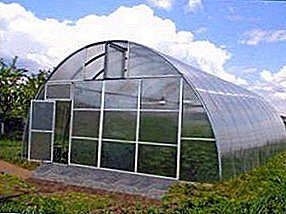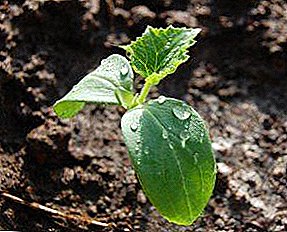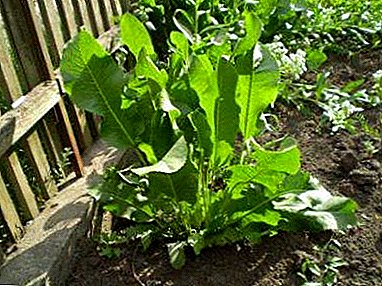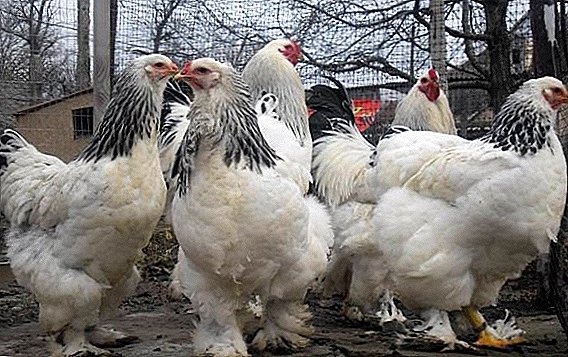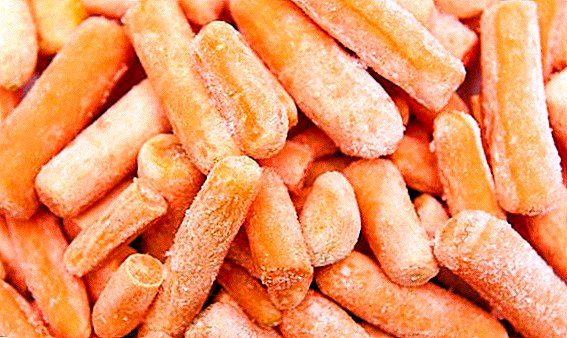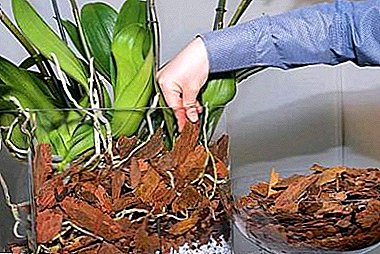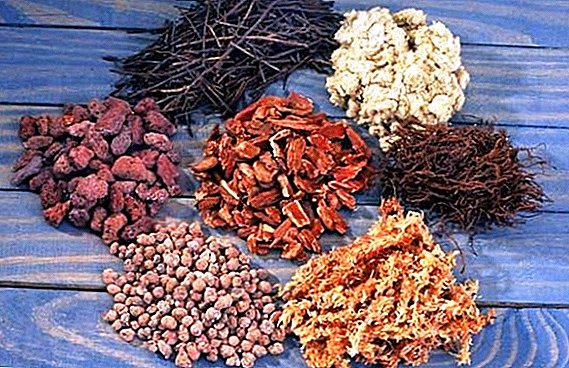 Those who first encountered growing orchids cannot understand how they can grow without land and often make the mistake of buying them the usual earthen mixture.
Those who first encountered growing orchids cannot understand how they can grow without land and often make the mistake of buying them the usual earthen mixture.
But the roots of this plant necessarily need free access to the air, otherwise it will die. Therefore, before you bring this queen of the tropics to your home, you need to carefully study her “taste tastes”.
What should be the soil for orchids, the requirements for the substrate
Plants that live off of other plants are called epiphytes in botany. These plants include phalaenopsis orchids, which are most often found in our stores and homes.
In order for the plant to please the eye with its flowering, it is necessary to know the conditions of its habitat in nature. This will allow you to better understand what kind of soil is needed for phalaenopsis orchids. 
Did you know? In nature, there are about 40 thousand species of orchids. The smallest flower has a diameter of less than 1 mm, and the largest - with petals up to 90 cm.
Under natural conditions, these beauties do not grow on the ground, but on the trunks of trees, from where they take the nutrients necessary for life, and it gives rain to them.
That is why they have such strange, bizarre-shaped roots and the usual land for orchids is not suitable. Phalaenopsis takes a lot of nutrients from the substrate during the flowering period and needs to be completely changed every 2-3 years.
The substrate for orchids should be sufficiently nutritious, loose and well water flowing. Ideal soil is well compacted, dries in 3 days and must contain a sufficient amount of moisture-absorbing components. 
It is interesting to learn about the popular types of orchids: dendrobium, miltonia, cymbidium.
The most common components of the substrate for growing orchids
It is possible to distinguish the main and minor components of the substrate for phalaenopsis orchids.
The main ones include:
- tree bark - can be pine, oak, birch;
- moss - preferably sphagnum;
- charcoal;
- forest fern roots.
Since orchids grow on trees, bark for them, the most natural component. From it they get the necessary food, so it is important to choose the right one.
You can, of course, buy ready-made bark in a special store. But in order to save the bark for orchids can be collected and procured with their own hands. The bark of pine or oak is most often used.  Pine bark is easier to prepare; it is enough to go to a pine forest and choose a healthy fallen tree. It is necessary to carefully examine the material - it should be dry, not rotten and without signs of pests.
Pine bark is easier to prepare; it is enough to go to a pine forest and choose a healthy fallen tree. It is necessary to carefully examine the material - it should be dry, not rotten and without signs of pests.
The bark should be easily pulled off by hands from the trunk. With oak bark is a bit more complicated, but it is more beneficial for the plant - it has more nutrients.
Important! Bark can not be taken from a growing tree, only from a dry fallen specimen or a beautiful, not rotten stump.Moss needed to retain moisture and as an additional fertilizer. It also has the ability to absorb excess harmful salts and has a bactericidal effect. Collecting his occupation is quite difficult, as it grows in forest pits, where you can easily fall through, so it's easier to buy a bag in a store.
 Charcoal needed in the substrate to adjust the water balance, as well as a natural antiseptic. But you need to add a little, because over time it accumulates salt, and this is harmful for the plant. It is not recommended to simply collect it in extinct bonfires, since it is not known what else burned there besides logs. It is better to kindle a fire from birch wood and then take the coals from there.
Charcoal needed in the substrate to adjust the water balance, as well as a natural antiseptic. But you need to add a little, because over time it accumulates salt, and this is harmful for the plant. It is not recommended to simply collect it in extinct bonfires, since it is not known what else burned there besides logs. It is better to kindle a fire from birch wood and then take the coals from there.  Fern root It has a unique composition, which has almost all the trace elements necessary for an orchid.
Fern root It has a unique composition, which has almost all the trace elements necessary for an orchid.As additional components for soil preparation can be used: pine cones, peat, earth, walnut or coconut shells, expanded clay or foam.  Pine cones are divided into scales and added together with bark. Expanded clay or foam is used as a drain to avoid stagnant moisture. Land for orchids is better to take where it is covered with needles or leaves, and in very small quantities.
Pine cones are divided into scales and added together with bark. Expanded clay or foam is used as a drain to avoid stagnant moisture. Land for orchids is better to take where it is covered with needles or leaves, and in very small quantities.
Important! Before transplanting phalaenopsis should be watered so as not to damage the roots when removed from the pot. The roots must be rinsed in warm water, clearing, thus, from the remnants of the old soil.
How to make a primer for orchids, ready-made composition options
Having carefully studied the required soil composition for orchids and having prepared all the components, you can proceed to its preparation. Variants of the soil mixture may be different.
If there are several colors in the house, you can experiment and make your own mix for everyone. This will help determine the optimal composition. How much liked the soil of a tropical beauty can be understood by the frequency of flowering and the number of flowers - the more of them, the better the soil. The soil for orchids at home is prepared immediately before planting. Garbage and branches are removed from the ground, coal is crushed into small pieces, the bark is disassembled into chips and boiling water is used.
Moss should be soaked in water for 24 hours, and pieces of fern roots to arrange a shower to get rid of insects. Any drainage is laid on the bottom.
It can be not only expanded clay or polyfoam, but also broken brick, small crushed stone, nutshell. Then you can start preparing the soil for orchids, having thought over the composition for making your own hands. Here are some ready-made options:
- Universal is a mixture of one part of charcoal and five parts of the bark of oak or pine, as it is suitable for flowerpots, and for greenhouses. This option provides good air circulation and does not accumulate moisture.
- The composition that is well suited to orchids growing in blocks, pots or baskets: 1 part of the coal mixed with 2 parts of crushed sphagnum and 5 parts of wood chips.
- Orchids that need additional feeding will be perfect for a mixture of peat, charcoal and pine bark in a 1: 1: 1 ratio. It also adds 3 parts of deciduous land.

Did you know? Orchid - one of the few plants that does not cause allergies.
Rules for the selection of purchased soil
If you have neither the time nor the ability to assemble the components and prepare the soil for your plants on your own, you can buy ready-made mixture in the store. Today a huge choice is offered, but, unfortunately, not all products are suitable.
Therefore, when buying ready-made soil you need to pay attention to some features. The main thing is that the pieces of bark in it must be whole, up to 3 cm long, and in no way crumbled.
If the soil looks like a lump of earth, then it is no longer suitable, since it will accumulate moisture and do not allow air to pass through, and this will lead to rotting of the roots. As part of the purchased soil should not be the ground, only pieces of coal, tree bark, fern root, possibly perlite and coconut fiber. On the package must be indicated that this soil is for epiphytes.
Growing these amazing tropical plants is a painstaking and demanding job. But if you treat the case with love, orchids will thank you with unique flowers that will please the eye all year round.



